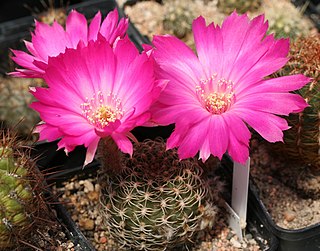
Lobivia backebergii is a species of flowering plant in the cactus family Cactaceae, native to eastern Bolivia and southern Peru.

Lobivia cinnabarina is a species of cactus first described in 1885.

Lobivia ancistrophora is a species of cactus. It has a globular shape, few spines, with large, white flowers attached to long, green tubes. It occurs in Bolivia, at altitudes of 600–1800 metres. Under its synonym Echinopsis ancistrophora it has gained the Royal Horticultural Society's Award of Garden Merit.

Soehrensia formosa, is a species of Echinopsis found in South America. In north-western Argentina, Bolivia and northern Chile. First published in Cactac.: Handb. Kakteenk. 3: 1678 in 1959.

Lobivia bridgesii, is a species of Lobivia found in Bolivia.
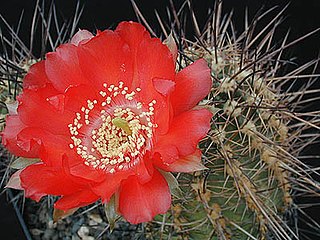
Echinopsis haematantha, is a species of Echinopsis found in Argentina and Bolivia.

Lobivia ferox, is a species of Lobivia found in Bolivia and Argentina.
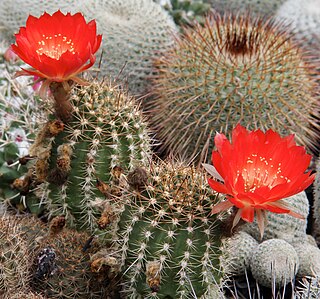
Lobivia hertrichiana, is a species of Lobivia found in Bolivia and Peru.

Lobivia pentlandii, is a species of Lobivia found in Bolivia and Peru.

Echinopsis strigosa, is a species of Soehrensia in the cactus family. It is native to north western Argentina. It was first published in Cactaceae Syst. Init. 28: 31 in 2012.
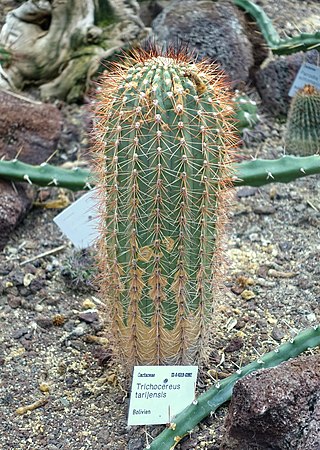
Soehrensia tarijensis, is a species of Soehrensia, in the cactus family. It is native to Bolivia and northwestern Argentina.

Lobivia schieliana, is a species of Lobivia found in Bolivia and Peru.

Lobivia pampana is a species of Lobivia found in Peru.

Lobivia tiegeliana, is a species of Lobivia found in Argentina and Bolivia.

Echinopsis chrysantha, is a species of Echinopsis found in Argentina.
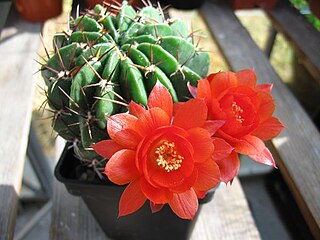
Lobivia maximiliana, is a species of Lobivia found in Bolivia and Peru.

Matucana haynii is a species of Matucana found in Peru.
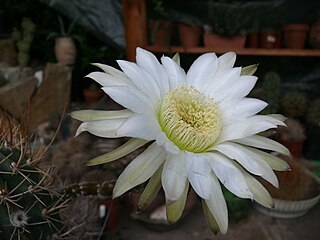
Acanthocalycium leucanthum is a species of flowering plant in the cactus family Cactaceae from Argentina.

Echinopsis marsoneri is a species of cactus from Argentina and Bolivia.
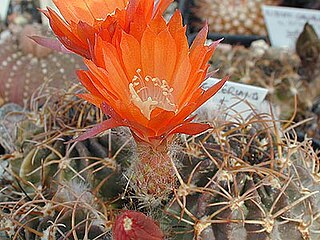
Lobivia tegeleriana is a species of Lobivia found in Peru.
























